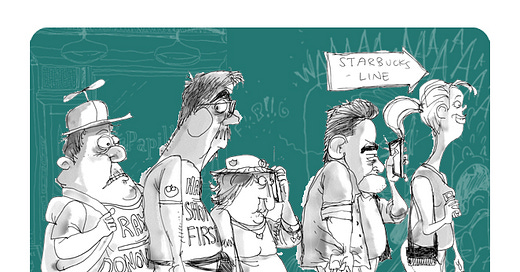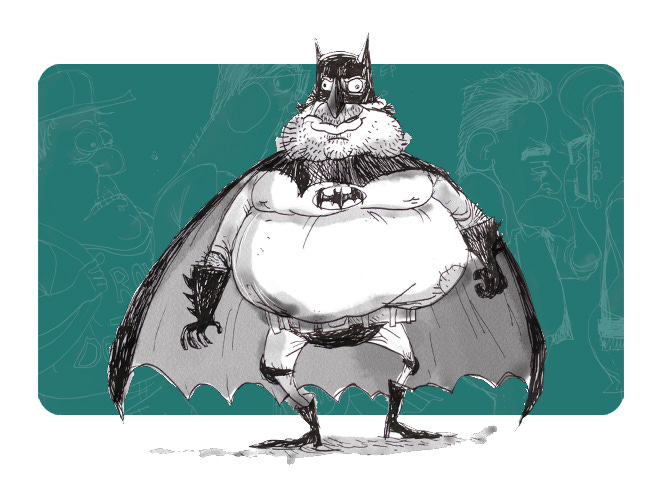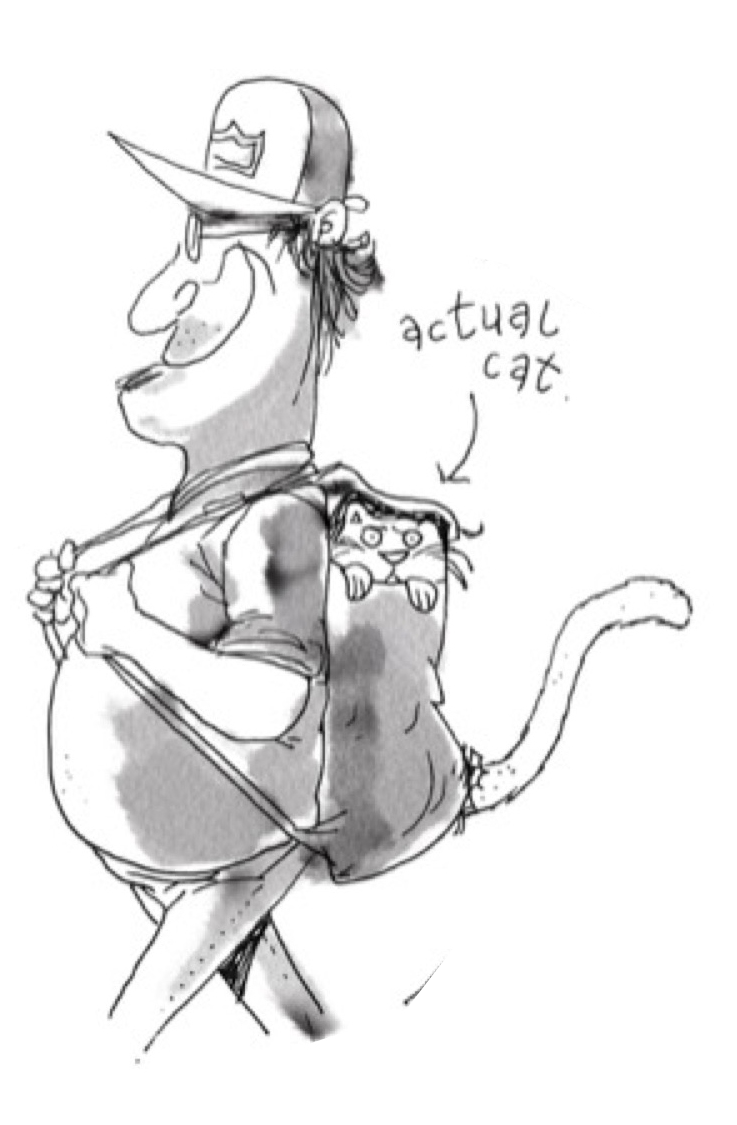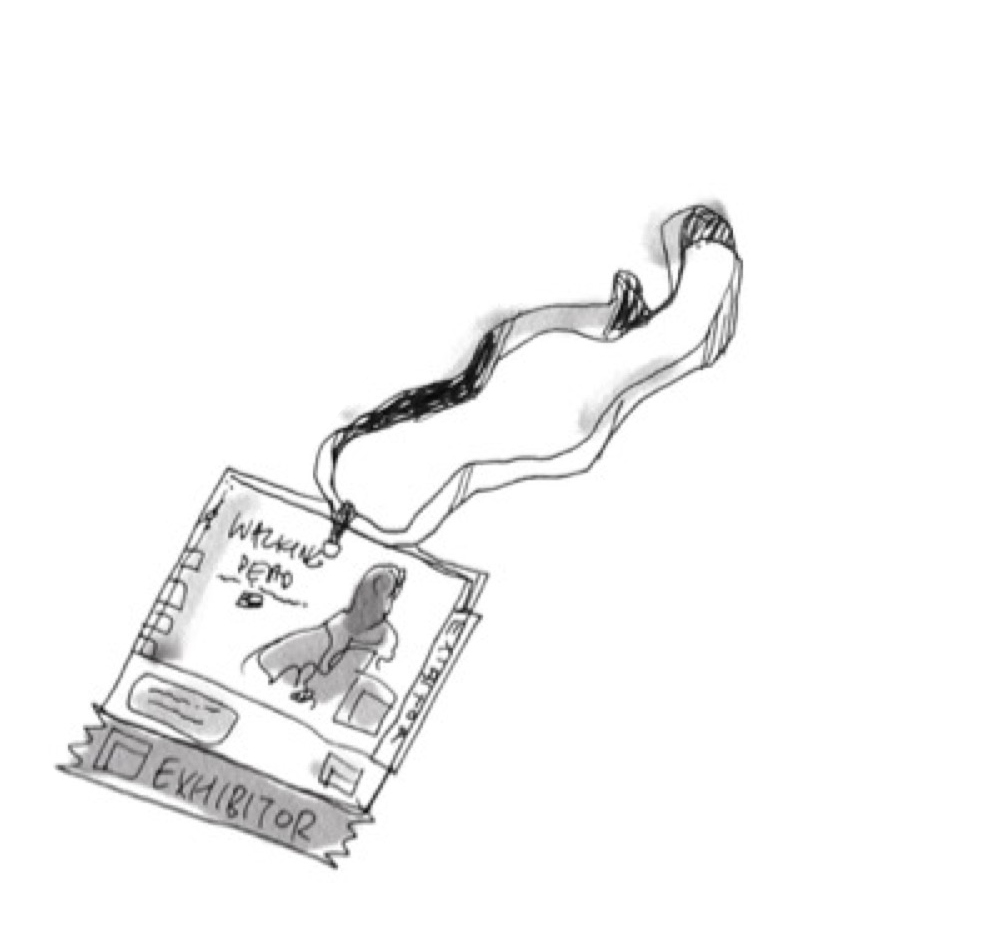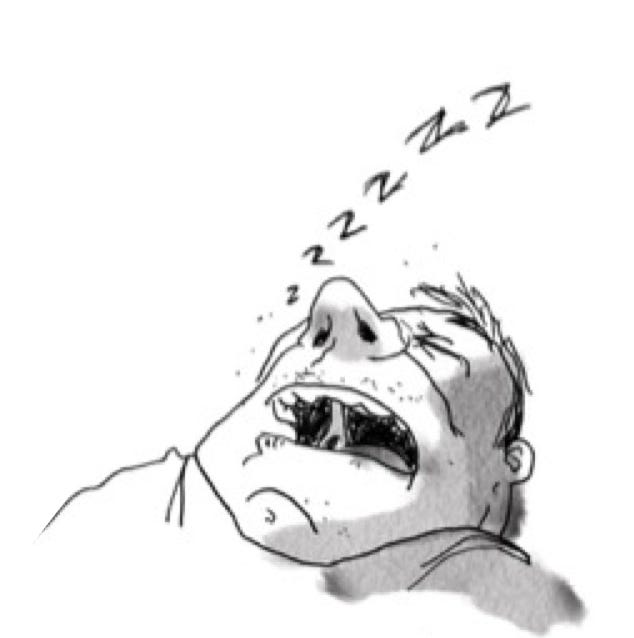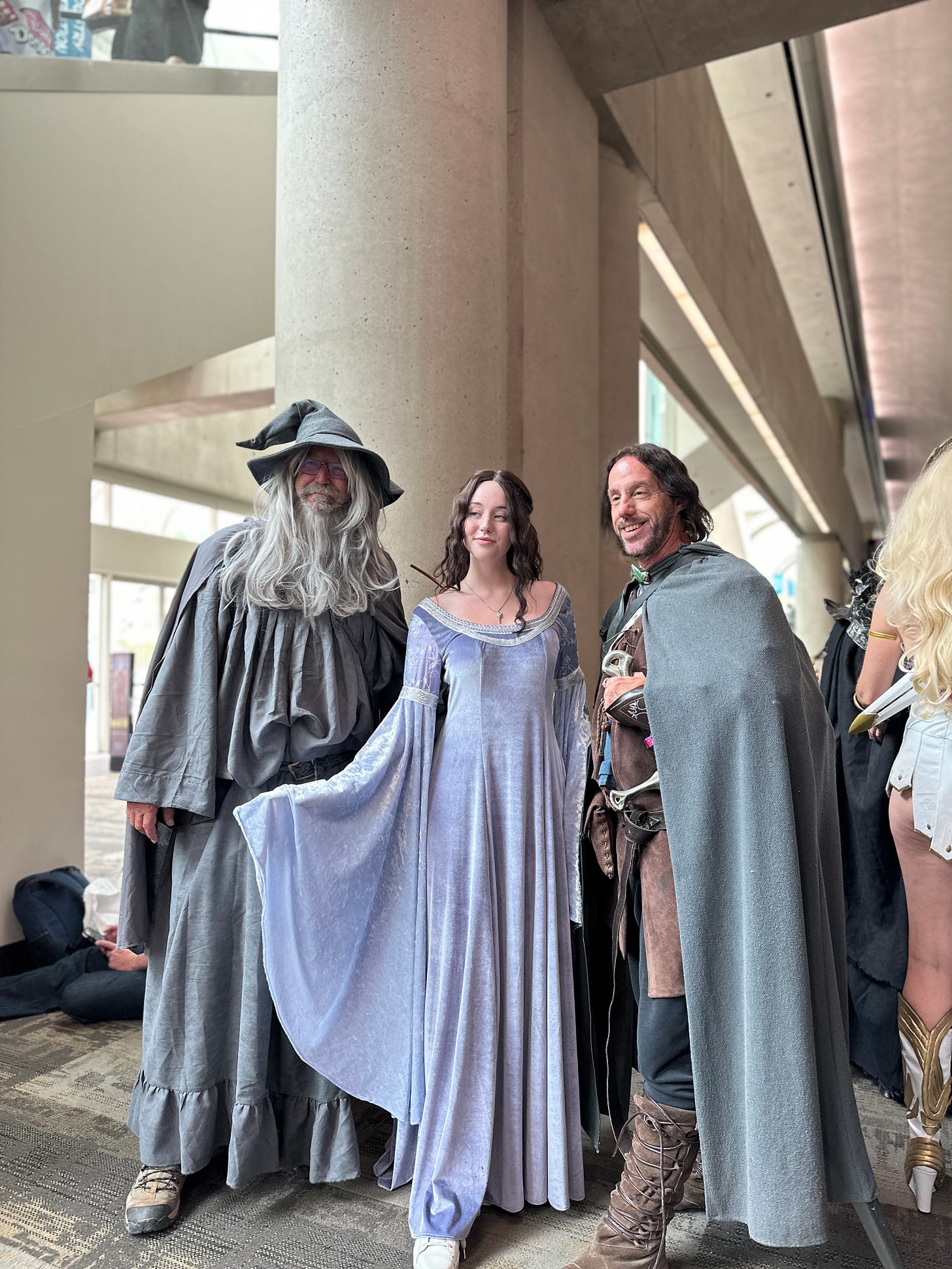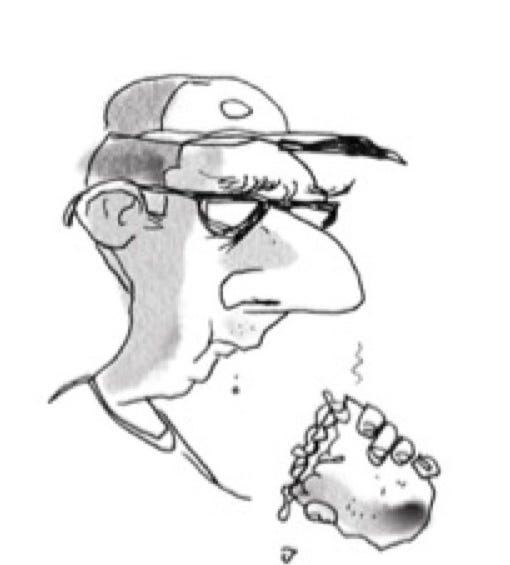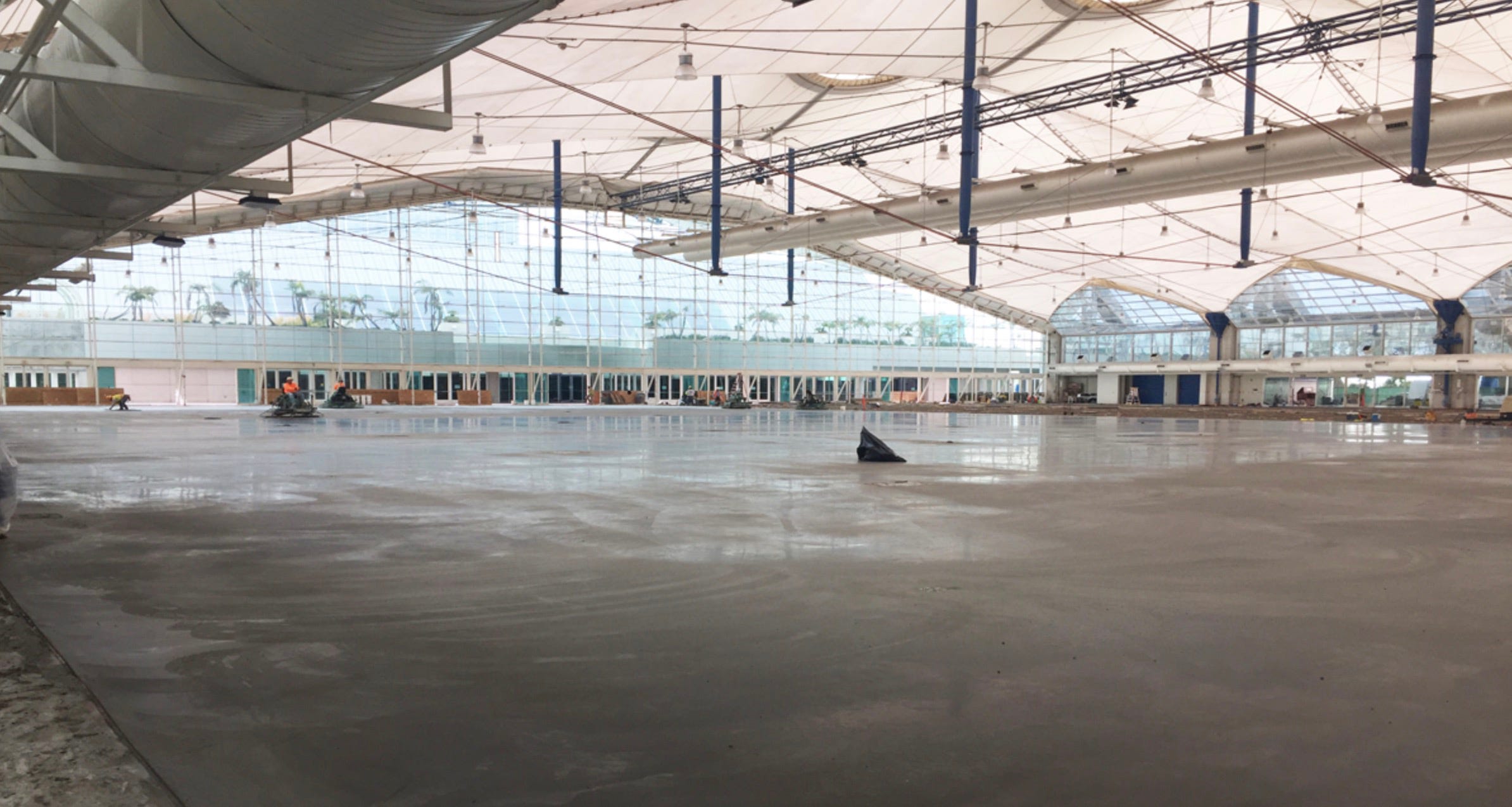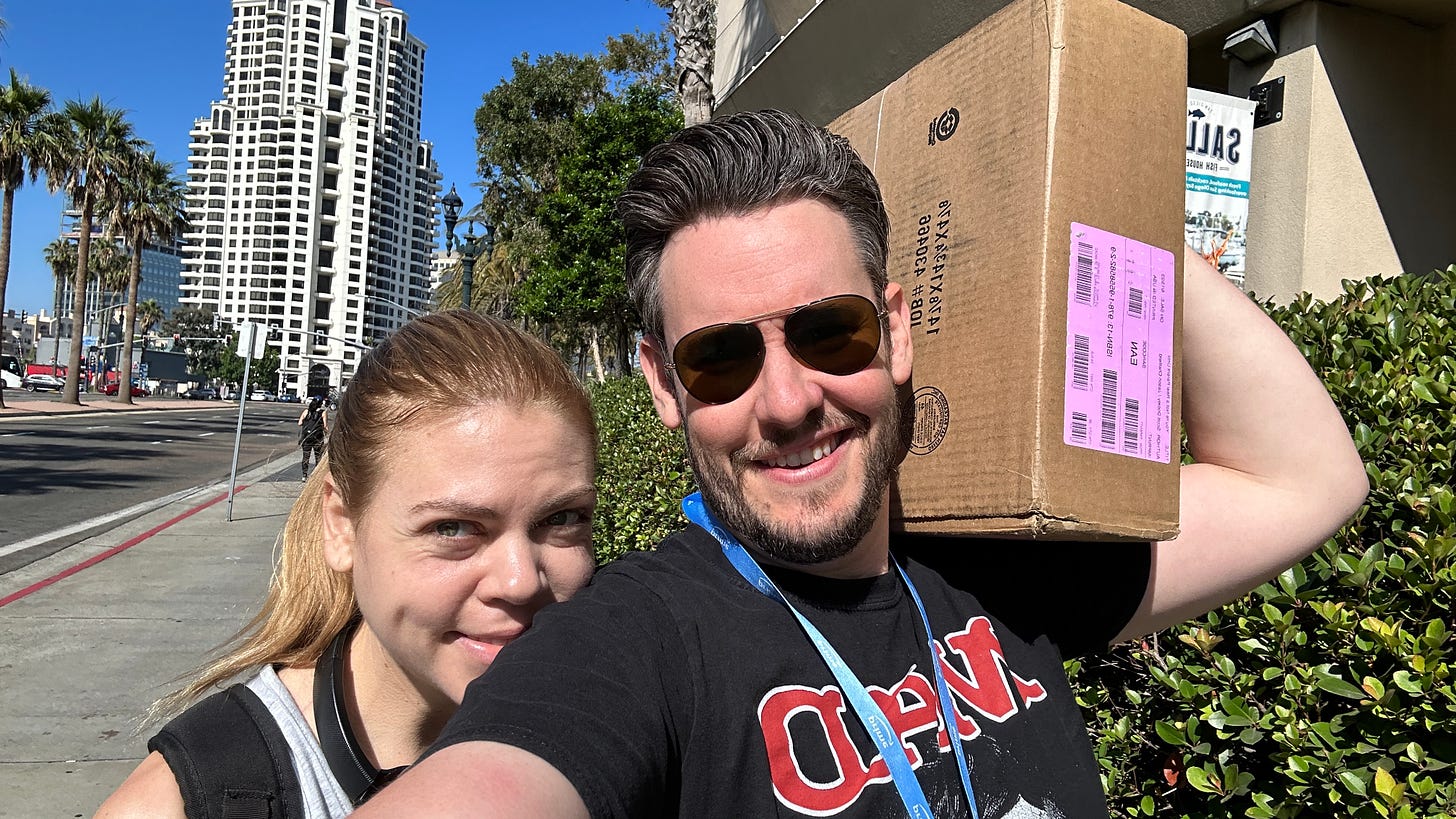How was the Celeb-free San Diego Comic-Con?
2023 saw the first Comic-Con in decades without big studios flying in big Movie/streaming stars. Did it make it worse... or better?
Journal Entry:
July 24, 2023
San Diego, NY
I’m tapping this out on my phone, on the Coaster to LA after my 15th Comic-Con.
Each year I do San Diego and New York. Each year it gets more insane, crowded, loud, and expensive. I sit at a booth amid a heaving swarm of 100,000 creatures in the convention center at any given time.
Despite the combined WGA/SAG-AFTRA strikes, attendance was still at a ridiculous high. People purchase their tickets, travel, and hotels months in advance, much of which is non-refundable, so they were going to be coming no matter what.
If it weren't for my fellow cartoonist booth-mates, like Jeffy (above), I’d go properly insane by day two. There is a camaraderie among the exhibitors, and when the clock ticks over to 5 pm on Sunday, a huge roar of applause and cheering ripples through the halls. It’s like someone hitting a home run at Yankee Stadium— deafening elation.

Preparation is Key. So is improvising.
No matter how much I prep for the event, I’m never quite ready for what it ends up throwing at me. Each year I tweak and change my approach, but exhibitors sometimes have to be adapting on the fly. The long-time exhibitors have it down to a fine art— military precision. My strategy is less of a fine art, and more of a ‘macaroni drawing with crayons and glue’.
Listen, I know it sounds like I’m exaggerating with the numbers, but each year SDCC vacuums in around 135,000 rabid fans of all ages over 4 days (plus a preview night), generating more than $160 million in regional economic impact and more than $3 million in hotel and sales tax revenues for San Diego.1
It all started 53 years ago…
Back then, it was a one-day event called “San Diego's Golden State Comic-Minicon”. People like Mark Evanier and Sergio Aragonés have wild stories of the people that used to come to these things — long before the streaming/movie/gaming studios sunk their fangs into it, squeezing every ounce of cash out of every eyeball in the room.
Has it always been in San Diego?
The event has been at the San Diego Convention Center since ‘82, but a lot of events have been held off-site for the majority of that time. (Last year, for example, also included the Hilton San Diego Bayfront, the Manchester Grand Hyatt, the San Diego Marriott Marquis & Marina, San Diego Central Library, and multiple other locations around the Gaslamp District.)
Wasn’t it moving to Anaheim at one point?
Part of the earliest rumors about a potential move came about because of concerns that SDCC had simply outgrown the Convention Center, although plans to expand the Convention Center have been in play (and in flux) since 2008. Although Comic-Con is contracted to stay in San Diego, any trouble with the event typically raises concerns that it might move to Anaheim or Los Angeles for a bigger venue. The expansions have helped allay those concerns.
The tickets sell out faster than a Taylor Swift concert.
These days, it can be challenging to get into San Diego Comic-Con. It tends to sell out quickly. In 2023, tickets sold out the same day they went on sale. In previous years, tickets have sold out in less than two hours.
But it's not impossible to get into the event if you really want to. Some say that Thursdays and Sundays are lighter days with smaller panels, so those are good days to go if you want to see the exhibit floor. If you want to get into the big Marvel or Disney/Star Wars panels, you should go on Saturday, but be aware that those badges sell out first.
The hotels are ridiculous. They call it “Hotelpocalypse.”
As with securing badges, sorting out where you’re going to stay happens up to 11 months in advance: Trying to snag a hotel room during the official hotel sale with special Comic-Con rates is an ordeal some refer to as “hotelpocalypse.”
The early bird sale, which usually involves prepaying for the stay in full, has people staying far away from the district the event even takes place. All methods of booking are nonrefundable, so you can count on most patrons to be in attendance, no matter which union is striking.
There is a lottery for hotels, where you figure out which 12 hotels you want to put down on your request form, and in what order. You don't have to select 12 hotels, you can select any number from 1 to 12, but you should go for 12. Then they just tell you which hotel you’re getting, and the price.
The price is extortionate.
The cost of everything —from food and lodging, to transport and shipping— is absolutely bonkers. The amount of money required to even exist in San Diego in July has led to many publishers doing the P&L on the whole thing and deciding to just let the big movie and streaming studios have their space. It just isn’t worth the cost of many of them being there now that it has become such an onerous expense.
In 2015, I paid $50 for a hot dog and a Coke from one of the on-site vendors. I had 10 spare minutes to find food and cram it in my face, so I sucked it up and handed over the cash. I don’t know what made me sicker; the price or the sausage.
Pandemic-Con
In 2020 and 2021, they scrambled to figure out what to do for Pandemic-era events. They did some virtual stuff and a smaller-scale Thanksgiving-time event, but we kind of don’t talk about those years. It really hurt a lot of businesses that rely on the con to make their money for the year. When we all returned for the first full SDCC in 2022, there was this vivid, ecstatic energy in everyone who thought they’d never get to come to Comic-Con ever again. Even though we were all wearing masks, it felt like there was hope after a long, dark winter of grim losses.
Ok, so what is Hall H?
You might have heard that one of the big ticket items for Comic-Con is Hall H. It sounds like a prison sector (and sometimes it feels like it) but it’s basically a giant hall full of over 6000 seated humans watching the latest announcements from the big studios: Star Wars/Disney/Marvel — DC, Hulu, Amazon Prime, etc. People line up for hours, sometimes days (they camp out in tents) to in the first 30 rows at Hall H. It’s a lot.
Long story short: celebrity actors, directors, producers, and the like all come out on stage and reveal the next big project that they want everybody to go nuts over. They gin up the fan base and everyone gets to Instagram/tweet that they heard it first live at Hall H. They also get to line up for hours to meet their favorite celebs at the signing area upstairs.
What did the strike mean for the announcements and super-panels?
This year, the celebrity signing area and Hall H were ghost towns. It was a totally different vibe. But as much as I feel for my writer and actor friends who deserve better terms from the giant studios …it wasn’t bad for the exhibitors who did attend.
For anyone living under a rock this year:
The Writers Guild of America (WGA) began striking against the Alliance of Motion Picture and Television Producers (AMPTP) on May 2. The strike was over an ongoing labor dispute and the union is asking for fairer compensation and protections for writers. The strike is the largest interruption to American television and film production.
Then the Screen Actors Guild (SAG) called for a strike on July 13. The strike means that actors are not allowed to attend Comic-Con or promote their upcoming projects. Actors are not permitted to promote any work tied to TV/streaming or theatrical contracts with studios. This includes no interviews, premieres, social media posts, and no conventions.
Actors who are genuine fans have no problems coming to the con as attendees, but they can’ promote anything.
That was actually kind of nice, to be honest. Some actors came in masked costume, so they didn’t have to show their faces until they instagrammed that they were there once they’d left. I heard murmurs that a bunch of them bought books and art to support the out-of-work writers and artists who ended up getting a booth to make some money. You never know who you’re going to bump into in line for a $50 hot dog.
Were there any exceptions?
Yes. Unscripted TV (Reality) and some animation projects were allowed to shill their wears, but it was pretty limited. The Animation Guild is under a different contract than the Writers Guild of America (WGA). The Animation Guild is a different union, and its members would be penalized for striking in solidarity with the WGA. If they went on strike, they'd be immediately fired.
The Bob’s Burgers stand was actually pretty cool. I do know that there are still a lot of voice actors and some production people who are unable to work on their animation projects despite the exception above.
What did people do with no celebrities to line up for?
Well, for the first time in decades, this year the attendees paid more attention to the creative minds who first made the characters the big-budget movies and shows are based on. The comic artists who wrote and drew the beloved creations that have filled movie cinemas for the past 20 years actually had people come to meet them, buy their stuff, get them to sign things, and —god forbid— thank them for their creation.
This year I actually had a thing to sell.
I’ve never had anything to sell at SDCC but on-the-spot commissioned drawings, and a few New Yorker cartoon prints. This year, I walked into the convention center each morning with a box of books. I walked out at the end of the day with no books. I repeated this for 4 days.
By 5 pm Sunday, I had 6 books left. It was amazing.
The Unions. The Studios. The situation.
By Saturday, the convention was in full swing, and things felt pretty nice! Everyone was being polite, as ever, but there were absolutely no gigantic long lines for super-panels. I felt bad for the actors and creators who had worked so long to be able to share the things they’ve made with their fans. Make no mistake, it definitely felt wrong. The greed of these studios and the fury of the Unions may well drag out for many months to come.
Unsolicited Drive-By Hot Take:
At one point, a guy in a stretched X-Files t-shirt shuffled past our booth, leaned in, and just said, “Th’ Unions must be shittin’ they pants!”
I don’t quite know who he was, or why he decided to lean in to tell us this sage nugget of insight. He didn’t buy a book. Didn’t say anything else. Just dropped it and shuffled past. I had questions. But I didn’t really want to ask them.

My favorite thing about the con?
The friends I get to see. Not everyone can make the annual National Cartoonists Society convention/awards each year, and more often than not, I get to see many of my cartoony friends at the Comic-Cons instead. At the end of each day, we gather to drink, eat, share stories about the people who came up to the booth, check in with how our sales are going, and generally make sure we don’t have mental breakdowns before Sunday.
Keep reading with a 7-day free trial
Subscribe to New York Cartoons to keep reading this post and get 7 days of free access to the full post archives.


